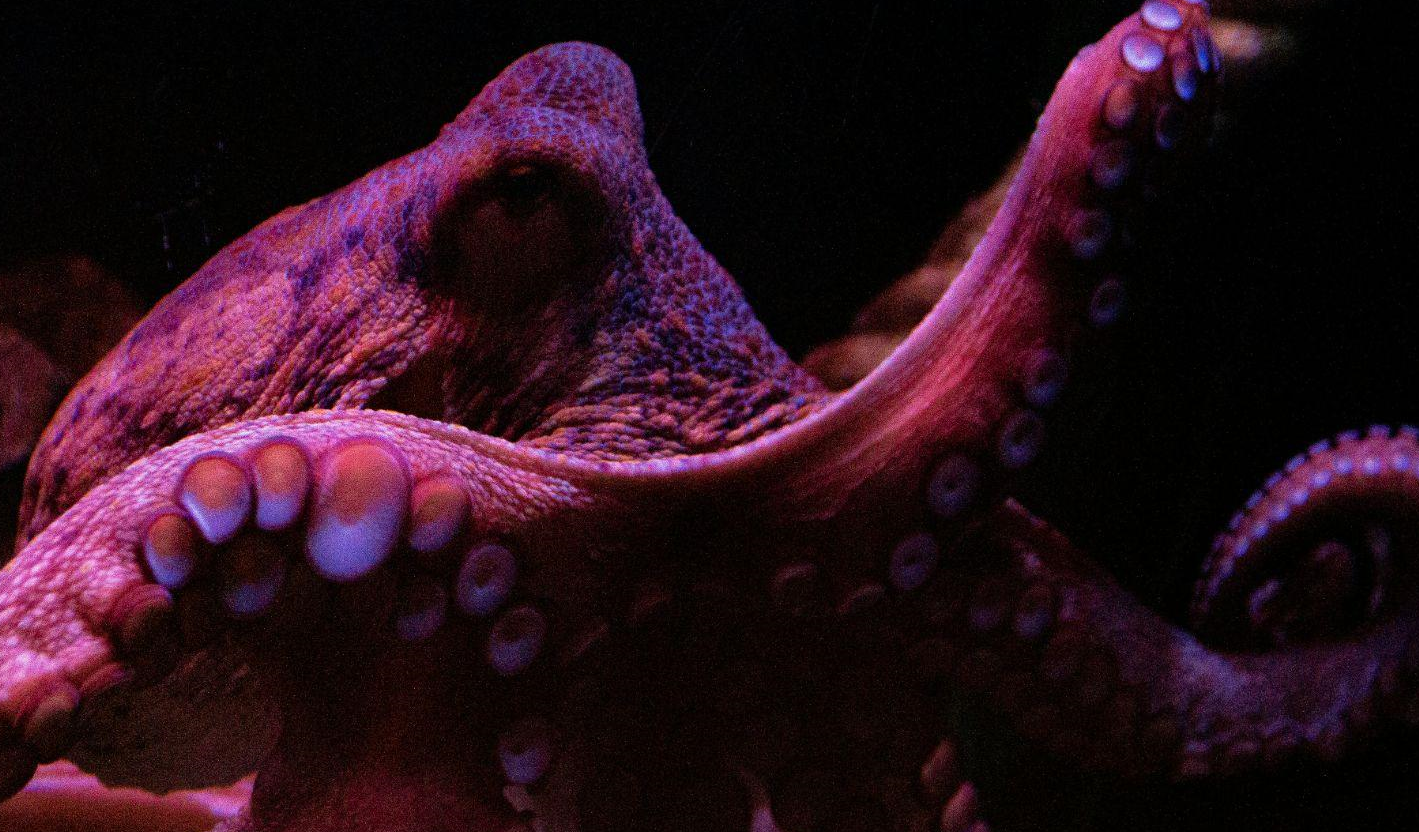 ENGLISH
ENGLISH

Giant octopuses are known as highly intelligent marine creatures due to having the largest brains among invertebrates. Not only that, giant octopuses can also prey on sharks!

Caption: Giant octopuses have exotic colors.
The giant octopus is one of the favorite attractions among the approximately 25,000 marine biota at BXSea. In addition to its exotic reddish-purple hue, the giant octopus also has a variety of unique characteristics and facts, including its ability to conquer and prey on large fish like sharks and birds.
As the name suggests, a giant octopus is the largest species of octopus in the world. This marine animal, known as the giant Pacific octopus, can weigh up to 600 pounds or about 270 kg. Wow, that's huge! Like octopuses in general, the giant octopus has the ability to change the color of special pigment cells in its skin to camouflage itself. Not only that, the giant octopus can also change the texture of its skin to resemble coral, plants, and rocks on the seabed.

Caption: Each tentacle of a giant octopus has 280 suction cups.
Before visiting the oceanarium, it's a good idea to note some unique facts about the marine biota there, including the giant Pacific octopus. Let's look at a list of interesting things you may not know about giant octopuses.
You're wrong if you think that octopuses (including giant octopuses) have eight tentacles. In fact, like squid, giant octopuses only have 2 tentacles (legs). The other six are arms. Each arm and tentacle of the giant octopus has different lengths made up of muscle fibers.
The term 'nine-lives' is associated with cats. Giant octopuses, on the other hand, have a no less impressive nickname, namely animals with nine brains. In short, the main brain of a giant octopus is located in the head like humans and animals in general. This main brain functions to regulate the overall work of the body. The other eight brains are located in each arm and tentacle. Acting as small brains, this part of the giant octopus's body functions to move and control each arm and tentacle independently.
Giant octopuses have a rather tragic life cycle. Female giant octopuses will die shortly after their eggs hatch. Equally sad, the life cycle of male giant octopuses ends earlier after the fertilization process. Fortunately, the intelligence of giant octopuses can help them survive even though they hatch without parents.

Caption: Giant octopuses have very hard beaks in their mouths.
The giant Pacific octopus is a carnivorous animal or predator that preys on and eats other marine animals. Giant octopuses hunt at night. The main food of giant octopuses includes shrimp, clams, crabs, lobsters, various types of fish, and even birds. Their sharp vision allows these large octopuses to have many types of prey. Interestingly, giant octopuses also commonly prey on large fish like sharks.
After camouflaging itself on the seabed, the giant octopus does not hesitate to wrap its eight arms around the shark, which can lift a weight up to 14 times its body weight. Once the shark is successfully paralyzed by being strangled, the giant octopus begins to devour it slowly.

Caption: The arm length of a giant octopus from end to end can reach 2-4 meters or more.
If you visit BXSea, you can see the giant octopus in the "Hide & Seek" zone. This hide-and-seek theme is specifically for marine biota that like to camouflage or hide behind rocks, such as giant octopuses, giant spider crabs, mollusks, and crustaceans. The "Hide & Seek" zone itself is one of the 20 main journeys at BXSea. If you are an octopus lover and want to learn more about their behavior, BXSea also offers a daily Giant Pacific Octopus Feeding Show at 2:15 PM to 2:30 PM. This is a golden opportunity for you to witness firsthand the feeding process of giant octopuses at BXSea.
Regular ticket prices (maximum 5 tickets in one transaction) are priced from IDR 150,000 to IDR 175,000. For more ticket information, please visit here. We look forward to your visit to BXSea! Children under 2 years old can visit for free without being charged a ticket fee. For more detailed pricing, you can check the ticket price page.
